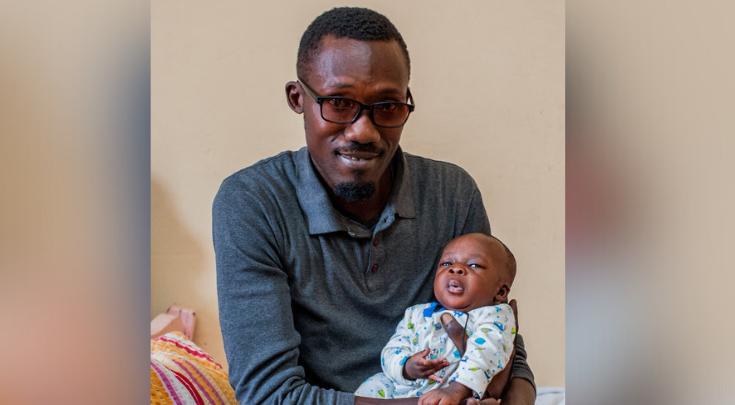How do women and men in poor countries educate themselves about pregnancy and childbirth? Do health care organizations give them enough accurate information to bring a baby safely into the world? Just as important, what are the “roles’’ of the mother and father in the delivery of a newborn?
These might seem like moot points in many parts of the world, but in others – such as some African countries − it demands more attention, said Dr. Richard Powis, assistant professor of maternal and child health at USF’s College of Public Health (COPH). Powis explained his ideas in a new paper “Making Sure She Eats Right: Absent-Presence, Articulation, and Surveillance-Care in Senegalese Men's Maternal Support,” which appeared in the journal Medical Anthropology.
Powis specializes in critical global health, political economy of health and feminist perspectives on family health. He focused on Senegal after traveling there a decade ago to study French and became enamored with the city of Dakar.
He observed that pregnancy is “women’s business,” while men’s roles in prenatal and postpartum care are mediated by gendered expectations of what new fathers are allowed to know and do. The roles of these men, Powis said, map onto masculine expectations of the authoritative, sovereign head-of-household.
“We all follow certain, often unseen social or cultural expectations of how to carry ourselves in the world, which we sometimes call ‘cultural scripts,’ ‘’ Powis said. “Gender, in some ways, is one big cultural script.’’
Part of the script is found in public health or government instruction manuals, which advise women and men about how to care for a pregnant mother, deliver and raise a child. When Powis was in graduate school, he read Marika Seigel’s book, The Rhetoric of Pregnancy, which presents an argument about how these manuals communicate social and cultural values to those using a particular product. Seigel then applied the idea to self-help pregnancy books in the United States.

A father and son. (Photo courtesy of Powis)
“At the time, I had become aware of the state-authored Handbook of Maternal and Child Health that they give pregnant women in Senegalese clinics,’’ Powis added. “It felt important to look into, especially since much of what is in the handbook is the sum-total of recommendations made by global health agencies and nongovernmental organizations.’’
The Handbook provides basic information about pregnancy, labor and delivery, breastfeeding, child nutrition and vaccinations. Using it as an example, Powis argued that state surveillance is refracted through preexisting masculine prenatal care roles and that men willingly articulate themselves to the role of the surveillance state by relying on the Handbook as a guide for how to watch their pregnant partners and make sure they are adhering to its guidance.
“What I noticed from interviews with pregnant women and their partners was how frequently someone would bring up the Handbook,’’ he said. “It helped them understand something, or it was a reference for them to check but the way people talked about it made me pay closer attention to what it does and the meaning it holds with respect to prenatal care, kinship and the gendered division of labor and knowledge.’’
As an example for his students, Powis discussed how society doesn’t expect boys or men to know much about menstruation. If they do inquire about it, they are often ridiculed as a social cue meant to remind them that they are deviating from the norm. This is prevalent in Senegal.
“If an expectant father suggests that he might like to attend a prenatal exam, the women in his life might say something like, ‘And what do you know about pregnancy?’ ‘’he said. “These comments are meant to be playful, but are also a stern repudiation that they aren’t welcome.’’
This relates indirectly to a concept Powis called “absence-presence,’’ which might be something we feel the presence of when it’s not there. For example, if men appear not to be involved in a pregnancy or childbirth (even though they are), it can set off a cascade of issues Powis outlined in his paper.
These include a number of misconceptions: how researchers might assume men aren’t involved and will never look for them, or to publish work in which men are said to be absent; work that claims men are absent will support downstream interventions and funding to find new ways to get men involved; if men (and women) avoid participation in a program, evaluators will claim the program failed.
“I have argued that the surveillance-state is refracted through the gendered expectations of men’s prenatal care roles, but also that men’s roles are in a tension between absence and presence,’’ Powis said. “It renders them simultaneously critical to women and children’s health and unappreciated by global health metrics.’’
